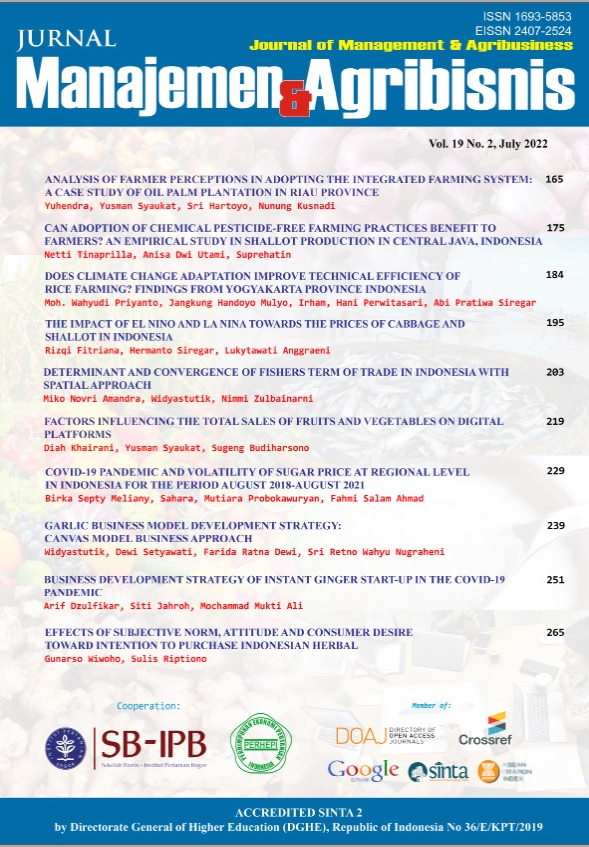The Characteristics of Government Sukuk Return Volatility Before and During Covid-19, and After Implementation of Primary Dealer System
Abstract
Government Sukuk (SBSN) has been launched since 2008, but it assumed illiquid. Therefore, the Ministry of Finance in 2020 regulates primary dealer for SBSN. At the same time, the restrictions on mobility due to the Covid-19 Pandemic in 2020 triggered negative sentiment. It increased volatility in the capital market. Asymmetric volatility occurs when market crash. The purpose of this study is to identify characteristics of government sukuk return volatility before and during the Covid-19 pandemic and after the implementation primary dealer system using EGARCH. The results show that SBSN responds to shocks more quickly during the pandemic. The benchmark series responds to shocks faster than non-benchmark. Moreover, during the pandemic, PBS04, PBS05, PBS07 and PBS22 were categorized high risk-high return. PBS02, PBS11, PBS14, PBS19, and SR10 were categorized low risk-low return. PBS17, PBS12, PBS15 and PBS21 were catogerized high risk-low return. PBS02, PBS14, PBS19, PBS17, PBS12 and SR10 have negative asymmetric return volatility. Furthermore, SBSN benchmark series PBS05 and PBS25 were categorized high risk-high return, PBS02 were categorized low risk-low return, and PBS026 were categorized high risk-low return. Most of the benchmark series have negative asymmetric return volatility.
Keywords: Asymmetric volatility return, Covid-19, EGARCH, government sukuk, primary dealer
Authors
Authors who publish with this journal agree to the following terms:
- Authors retain copyright and grant the journal right of first publication with the work simultaneously licensed under a Creative Commons Attribution License that allows others to share the work with an acknowledgement of the work's authorship and initial publication in this journal.
- Authors are able to enter into separate, additional contractual arrangements for the non-exclusive distribution of the journal's published version of the work (e.g., post it to an institutional repository or publish it in a book), with an acknowledgement of its initial publication in this journal.
- Authors are permitted and encouraged to post their work online (e.g., in institutional repositories or on their website) prior to and during the submission process, as it can lead to productive exchanges, as well as earlier and greater citation of published work (See The Effect of Open Access).

